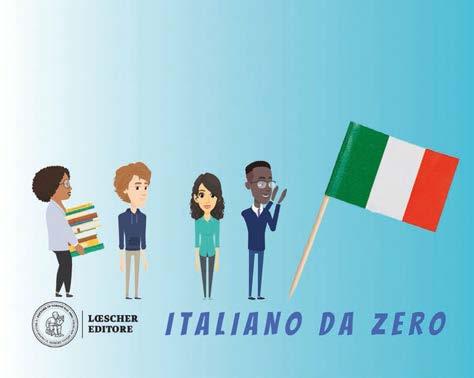Luisa Fumagalli - Daniela Rota
Rosella Bozzone Costa

Luisa Fumagalli - Daniela Rota
Rosella Bozzone Costa
ITALIAN COURSE FOR ABSOLUTE BEGINNERS/BEGINNERS
LANGUAGE AND VOCABULARY FOR COMMUNICATION
SMALL SNIPPETS OF ITALIAN CULTURE
VIDEO SUMMARY ANIMATIONS
SELF-CHECKING EXERCISES
AUMENTO
Download the app and access all the content on your smartphone by scanning the QR codes in the book
For information and assistance, contact: supporto.loescher.it

Your digital resources on your Smartphone
❶ Install the app on your device.
❷ Scan the QR code printed on the book page.
❸ Select the resource you are interested in to open it.
Download the app from the stores
This course is available on the myLIM platform for computers and tablets.
❶ REGISTER ON imparosulweb Più
Go to iwpiu.loescher.it and sign up by choosing your profile and confirming your registration via the link sent to your e-mail.
❷ UNLOCK THE BOOK
Use the unlock code printed in this book to access it on imparosulweb Più and to view the associated online expansions.
❸ DOWNLOAD THE MYLIM APPLICATION
Click on the Digital Book button and follow the instructions to download and install the application.
❹ DOWNLOAD THE UNLOCKED BOOK
Log into the myLIM library using your imparosulweb Più account, then click on the cover of the unlocked book to download it.
© Loescher Publisher - 2025
Operating office: Via Vittorio Amedeo II, 18 - Turin (Italy) 10121
www.loescher.it
All Rights Reserved
The rights for publication, reproduction, communication, distribution, transcription, translation, rental, lending, performance, processing in any form or work, digital storage, and adaptation, in whole or in part, on any type of medium and by any means (including digital and photocopies), are reserved for all countries. The purchase of this copy of the work does not imply the transfer of these rights, nor does it exhaust them.
Photocopies and Reproduction Permissions
Photocopies for personal use (i.e., private and individual use, excluding collective use) may be made up to 15% of each volume, upon payment of the fee established by S.I.A.E. (Società Italiana degli Autori ed Editori) as per Article 68, paragraphs 4 and 5, of Italian Law No. 633 of April 22, 1941. These photocopies can be made at S.I.A.E.-affiliated commercial establishments or through other methods indicated by S.I.A.E.
For reproductions that are not for personal use (e.g., professional, economic, commercial purposes, or for collective study tools such as handouts), the publisher may grant authorization for a fee, allowing reproduction of up to 15% of this volume. Requests should be sent to:
CLEARedi – Licensing and Authorization Center for Editorial Reproductions
Corso di Porta Romana, 108 - 20122 Milan E-mail: autorizzazioni@clearedi.org Website: www.clearedi.org
The publisher, to the extent of its competence, considers rare those works that are no longer in its catalog. Photocopying of such works, for copies available in libraries, is permitted even beyond the 15% limit, as it does not compete with the original work. However, works for which a later edition exists in the publisher’s catalog, those available in other publishers’ catalogs, or anthological works cannot be considered rare. Library contracts exclude, for libraries, educational institutions, museums, and archives, the right under Article 71-ter of the Copyright Law. For reproduction permissions beyond photocopying, contact: diritti@loescher.it
Licenses for Summary, Quotation, and Partial Reproduction for Educational Use with Digital Means
Quotations, reproductions, and summaries, when done using digital means, are allowed (Article 70-bis of the Copyright Law), but are limited to excerpts or parts of the work and must meet the following conditions:
a) For illustrative educational purposes only, within the limits justified by the pursued non-commercial purpose. (Illustrative purposes include examples, clarifications, comments, explanations, and questions in a lesson.).
b) Under the responsibility of an educational institution, in its premises or in another secure electronic environment accessible only to its teaching staff and students enrolled in the relevant course.
c) Provided that no voluntary licenses for such use are available on the market for educational materials. Loescher offers two types of licenses, valid for one school year:
• Free licenses: Allow reproduction, quotation, or summary of up to 5% of a work. The 5% limit cannot be exceeded through multiple free licenses.
• Paid licenses: Allow reproduction, quotation, or partial summary of more than 5% but no more than 40% of a work.
To obtain these licenses, follow the instructions on www.loescher.it/licenzeeducative Authorization is strictly reserved for the licensed educational institution and cannot be transferred in any way or under any circumstances.
ISBN & Copyright Information
ISBN: 9788858359471
Ristampe 2031 2030 2029 2028 2027 2026 2025
Some images in this volume may feature commercial product names and trademarks. The presence of these illustrations serves an educational purpose and should not be interpreted as an endorsement by the publisher or as an invitation to consume specific products. Trademarks on the cover are registered signs, even when not followed by the ® symbol.
Despite the dedication and expertise of those involved in the creation of this work, errors or inaccuracies may still be present. We apologize in advance and thank those who wish to contribute to improving the work by reporting them to clienti@loescher.it
Loescher Editore, a division of Zanichelli Editore S.p.A., operates under a Quality Management System certified in accordance with the UNI EN ISO 9001 standard. For references, visit www.loescher.it
The digital resources of this volume are reserved for those who purchase a new copy of the book. See more at www.loescher.it/scopriimparosulweb-piu
Loescher guarantees the full functionality of these resources to the buyer. In case of malfunctions, please fill out the support form at www.loescher.it/help-isw
The update warranty is limited to correcting errors and fixing malfunctions present at the time of the work’s creation. Loescher also guarantees that the digital resources under its control will be accessible, from the time of purchase, for the entire duration of the book’s normal educational use. After this period, some or all resources may no longer be accessible or available.
The publisher provides PDF files of this book’s pages for students who are blind, have low vision, experience motor disabilities, or have specific learning needs. These files allow text enlargement and reading through screen reader software.
For more information on how to obtain these files, contact: clienti@loescher.it
Solutions to exercises, including step-bystep answers and other assigned tasks, are protected by copyright law as original works. These cannot be distributed, shared with third parties, or used commercially, except for exclusive educational purposes.
TDM Rights (Text and Data Mining)
Data extraction from this work or its parts and related activities are not permitted, except in cases of free use allowed by law. The publisher may grant a license. Requests should be sent to: tdm@loescher.it
Editorial Team
Editorial Coordination: Filippo Doveri
Editorial and Production Team: Edizioni La Linea – Bologna
Graphic Design: Elena Gaiani, Angela Ragni
Layout: Gabriel de Banos, Angela Ragni
Iconographic Research: Giorgio Evangelisti
Illustrations: Alessia Colombo
Cover Design: Davide Cucini, Emanuela Mazzucchetti; Leftloft – Milan/New York
Multimedia Materials: Andrea Gasparri, Francesco Carpini
Digital Text Version: Maieutical Labs – Turin
Photolithography: Walter Bassani – Bascapé (Pavia)
Printing: Sograte Litografia s.r.l. – Zona
Learning Italian from scratch is a complex task which requires time and effort, particularly for students with very different mother tongues or for learners who are unused to studying languages. So why not try to make the task a little simpler and more enjoyable by offering ways of supporting and motivating those who are engaging in this first and vital phase of language learning and getting to know a culture? This question formed our starting point in the planning of Italiano da Zero
The following illustrate some of the features.
The students Italiano da Zero is intended for absolute beginners, including those with mother tongues very unlike Italian, but who already know the Roman alphabet.
The communication settings have been chosen to make them suitable and even for those learners who, for tourism or study, have to learn the language quickly. The book lends itself in fact to use in intensive courses, as a first “taste” of the language and culture.
The structure This volume is divided into compact work units, with many texts involving oral input which use authentic language in real situations, and a slow and gradual progression in linguistic content with grammatical material presented with a light spiral syllabus.
As it is intended for students starting from scratch who need urgently to make themselves understood, we have included a great deal of comprehension, of work to enlarge vocabulary and on linguistic functions, setting simple tasks for interaction in the main daily communication settings in public and private life required by QCER for level A1. Together with more traditional activities, there are numerous games to lighten the lesson and at the same time reinforce grammatical, lexical and functional content in an entertaining way. The “Games” section fulfils this function. All the units also include work on pronunciation, to familiarise the students with the intonations and new sounds of Italian, which might otherwise prove an obstacle when the learner starts to speak.
Culture In each unit, there are small inserts called “Did you know...”, which point out some aspects of the culture arising from the activities completed, and propose intercultural comparisons.
In addition, in the section “Discover Italy”, various cultural themes are addressed through guided tours of different parts of Italy, with the aim of introducing the richness and variety of Italian cultural heritage, stimulating the learner’s curiosity.
As well as the book, multi-media material Italiano da Zero offers two new digital tools to enable language study out of class: “Video Summary” and “Allenati!”. The video summaries are brief animated videos which present in an entertaining way the principal communication functions of each unit. “Allenati!” is a platform with online self-evaluation exercises. For each unit of Italiano da Zero, the student will also find exercises on their phone divided into four sections: Vocabulary, Listening, Grammar and Communication.
The authors wish students and teachers every success with their study of Italiano da Zero.
Key to symbols

TEACHER’S GUIDE E
audio recording production activity teacher refers to the guide
refer to other exercises in the section USING YOUR ITALIAN
UNIT 0 Cominciamo! - Let’s start! .........................................................................................................
CommunicationVocabulary Grammar Pronunciation
Communicating in class: come si dice, puoi ripetere, che cos’è?
- Italian words you might know
- classroom: foglio, lavagna, libro
- instructions: leggi, scrivi, ripeti
- numbers: 1-12
UNIT 1 Piacere! - Nice to meet you! .................................................................................................
- introducing yourself: ask / say name, nationality, home town
- ask / say how you are
- ask / say where you live
- ask / say your age
- greetings: ciao, buongiorno, piacere
- countries and nationality: Italia, italiano
- cities: Roma, Parigi, Dheli
- numbers: 11-100
- subject pronouns: io, tu, lui, lei, Lei
- essere and avere: sono, sei, è, ho, hai, ha
- adjectives of nationality: italiano/italiana, cinese
- linking words: abito a Roma
- formal/informal: come sta/stai?
- prepositions of place: in Italia, a Roma, di Parigi
- Present tense of verbs ending in -are: abito, abiti, abita
- interrogative pronouns: come, dove, che cosa
Discover Italy: Famous Italians UNIT 2 Ha un documento? - Have you any ID?
CommunicationVocabulary
- booking a room: ask about availability, cost, amenities
- spell your name
- ask / say phone number, credit card number, e-mail address
- where to stay when travelling: albergo, agriturismo
- amenities in a hotel: piscina, parcheggio
- alphabet
- furniture in room: letto, armadio
- nouns ending in -o and -a: documento, valigia
- indefinite articles: un, una
- formal/informal: qual è il tuo/suo numero?
- esserci: c’è
- definite articles: il, la, l’
- adverbs: sì, no
- negatives: non c’è il wi-fi
- Present tense: essere, avere, verbs ending in -are
- interrogative pronouns: qual, quanto
Discover Italy: From north to south (holiday destinations in Italy) UNIT 3 Che cosa prendi? - What will you have?
- ordering in a café
- ask / say how much it costs
- ordering in a restaurant
- ask / say what you like
- drinks, food: aperitivo, cappuccino, panino
- euros
- courses: primo, secondo, contorni
- dishes: pasta, carne, patatine
- Present tense of verbs ending in -ere
- plural of nouns in -o and -a: panini, pizze
- definite articles: i, le
- esserci: c’è, ci sono
- verb piacere: mi piace, mi piacciono
- nouns ending in -e: pesce, carne
- prepositions: con il gelato, al prosciutto
- intonation in questions
- linking words: non c’è
- sounds /k/ e /t∫/: camera, chiave, cellulare
- linking words: un panino
- sounds /g/ and /dȝ/: fragole, gelato
Discover Italy: Regional dishes UNIT 4 Dov’è la stazione? - Where is the station? ............................................................. p. 40
CommunicationVocabulary
- ask / say what work you do and where you work
- describe who it is and what they do
- ask / give directions in the street
- ask how far it is
- places in town: piazza, ospedale, scuola
- jobs: commesso/ commessa, farmacista
- adverbs of place: dietro, vicino, a destra
- means of transport: macchina, autobus, bicicletta
- Present tense of fare
- dovere to give directions
- Present tense of verbs ending in -ire
- agreement of article + noun + adjective: la bicicletta è ecologica
- prepositions: in treno, in via Verdi, per la stazione
Discover Italy: World Heritage cities (Italian cities on UNESCO World Heritage list)
- linking words: c’è una banca qui vicino?
- double consonants: note / notte
UNIT 5 Vorrei del pane - I’d like some bread ............................................................................
CommunicationVocabulary Grammar Pronunciation
- plan what to make for dinner
- understand a recipe
- go shopping for food (Che cosa posso darti? Vorrei un chilo di pane)
- food products: pane, formaggio, peperoni, anguria
- shops: panetteria, fruttivendolo
- quantities and containers: un etto, una bottiglia
- verbs and ingredients of a recipe: mescolare, tagliare, farina
- indefinite articles: un’/una/un
- Present tense of verbs ending in -ire (-isc-): preferire
- agreement of article + noun + adjective: i pomodori verdi
- prepositions: in salumeria, una bottiglia di vino
- conjunctions: anche, ma - sounds /∫/ and /sk/: pesce, pesche
Discover Italy: Local flavours and traditions (typical products and festivals)
UNIT 6 Ci vediamo stasera? - See you this evening?
- saying what you do in your free time and during the day
- ask / say the time
- inviting and accepting / declining an invitation
- free time activities: andare in palestra
- times: sono le 9
- parts of the day: mattina, pomeriggio
- adverbs of time: oggi, domani
- places where you spend your free time: cinema, discoteca
- days of the week
- Present tense of the verb andare
- revision of regular verbs of the three conjugations in the Present tense
- Present tense of irregular verbs: venire, potere
- prepositions of time: alle 10, di / alla mattina
- prepositions of place: al cinema, a teatro, in pizzeria
- conjunctions: perché, e poi
Discover Italy: What do you do on Sundays? (museums and cultural destinations)
UNIT 7 Ho la febbr e - I have a temperature
CommunicationVocabulary
- describing the weather
- talking about health
- interacting at the pharmacy
- talking about sports you take part in
- asking for information about a course
- seasons - parts of the body: gola, schiena
- symptoms: ho mal di testa
- medicines and treatment: sciroppo, mettere una pomata
- sports: tennis, nuoto
- Present tense of dovere and volere + verb in the infinitive
- Present tense of reflexive verbs: divertirsi, rilassarsi
- prepositions of time: in inverno, da tre giorni, per una settimana, due volte al giorno
Discover Italy: The good and bad habits of Italians (lifestyle)
- saying what you did at the weekend / yesterday
- describing a family occasion and a holiday
- say / ask when a birthday is
- talking about family celebrations
- describing the family
- weekend and holiday activities: fare una festa, andare al mare
- adverbs of time: ieri, sabato scorso
- family members: fratello, nonna, zio
- months
Discover Italy: Family celebrations
- Perfect tense (past participle of regular verbs + the auxiliary avere)
- some irregular past participles: fatto, aperto
- some possessive adjectives: mio/mia, tuo/tua
- Perfect tense with the auxiliary essere and agreement of the past participle
- linking words: sono le tre e mezza
- stress on the last syllable: lunedì, città
- sounds /n/ and /ɲ/: nome, cognome
- prepositions of time: a gennaio - sounds /l/ and /ʎ/: Sicilia, Puglia

numeri – numbers
città – cities

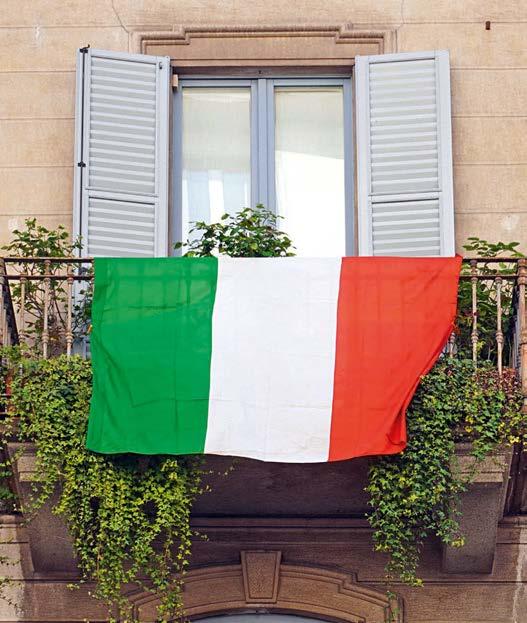
altre parole – other words
colori – colours

1 Which words do you know in Italian?
cibi e bevande – food and drink

2 Listen and repeat.








3 Listen and circle the objects you hear from ex. 2.




4 Listen and complete. non lo so puoi ripetere non ho capito ho capito come si dice
1. ◆ Che cos’è?
◆ È un libro.
◆ Scusa , puoi ripetere per favore?
◆ È un libro.
2. ◆ Hai una matita?
◆ Scusa non ho capito, per favore?
◆ Hai una matita per favore?
◆ Eccola!
3. ◆ “pen” in italiano?
◆ “Penna”.
◆ Ah, “penna”. , grazie!
4. ◆ Che cosa significa questa parola?
◆ . Aspetta, cerco sul dizionario.
5 IN PAIRS How do you say it? Ask your partner how to say it in Italian and complete. Student A goes to the Appendix on p. 90, Student B to p. 91. E.g.
Come si dice “door” in italiano?
Scusa non ho capito, puoi ripetere?

6 WHOLE CLASS What can you see in your classroom? TEACHER’S GUIDE
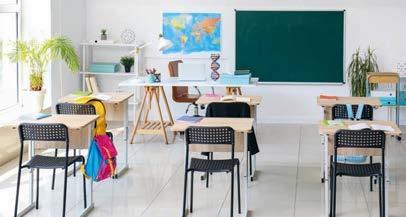
che cos'è? come si dice? “Porta”. “Porta”.





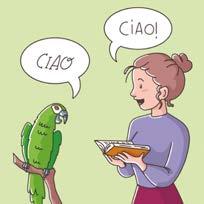

7b Connect the images to the words.
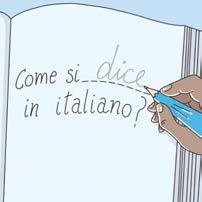
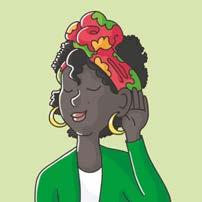




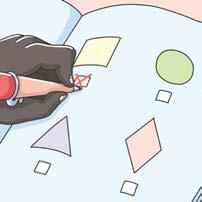


Listen and repeat.



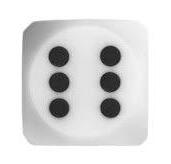











9 IN GROUPS Throw the dice and say the number. TEACHER’S GUIDE
10 WHOLE CLASS Let’s count down! TEACHER’S GUIDE
E.g. 11 Rebus. Find the words.



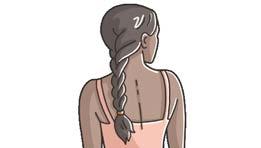




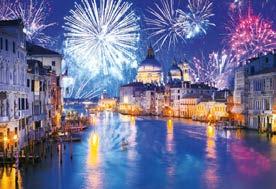








1a Match the Italian words to the English translation. Do you know these greetings in other languages?
1. arrivederci
2. buonasera
3. ciao
4. buongiorno
a. hi
b. good morning
c. goodbye
d. good evening
1b What do Italians say when they meet for the first time? Complete. What do you say in your language?

Italians shake hands when they meet someone for the first time. What about in your country? Did you know…

2a Listen and choose. Where are the people? 05
a. in ufficio

2b Listen again and match. 05




b. in classe c. al bar
Observe
Come ti chiami? Mi chiamo
2c Put into the correct order.
E.g. ? / sei / di dove Di dove sei?
1. italiano, / sono / di Milano
2. come / ? / ti chiami
3. Diego / mi chiamo
4. di Madrid / sono / spagnola,
5. Jan, / mi chiamo / cinese / sono
6. cinese, / di Shanghai / sono
7. Anna, / sono / mi chiamo / italiana
E.g.
Observe esserechiamarsi iosonomi chiamo tuseiti chiami italiano, italiana, Come ti chiami?
Matteo. Anna. Di dove sei? di Torino. Sono
– Verb
e.g. sono, ti chiami
2d IN PAIRS Take a card from Appendix on p. 90 and repeat the dialogue. E 12
Mi chiamo mary. Di dove sei?
Piacere!
Sono inglese, di Londra.

Piacere! – Nice to meet you!
Observe
lui è (maschile – masculine) lei è (femminile – feminine)
spagnolo spagnola tedesco tedesca turco turca italiano italiana cinese cinese inglese inglese

3a Listen and complete. 06


NomeCognomeNazionalitàCittà
1 Markus 2 Blanco 3 Ford 4 Dan
3b Form sentences.
E.g. Lei è turca. è - is

Aggettivo di nazionalità –Adjective of nationality italian-o, italian-a


Lui - He Lei - She senegalese turca marocchino russa inglese spagnola cinese americano indiano giapponese
3c PRONUNCIATION Listen and repeat.
E.g. ◆ Ciao, come ti chiami? ◆ Mi chiamo Anna.
◆ Di dove sei? ◆ Sono cinese, di Pechino.
3d Separate the words to make a sentence.
1. Ciao,michiamoMarioesonoitaliano.
2. Leièturca,diIstanbul.
3. MichiamoJulia,sonotedescadiBerlino.
4. Ciao,michiamoAlì,piacere!
5. LuièamericanodiNewYork.
6. MichiamoFarid,sonoiraniano.Tudidovesei?
3e WHOLE CLASS Ask your classmates for their names and nationalities. TEACHER’S GUIDE

4a Listen and match the dialogues to the images.


in albergo b. al bar

4b Listen again and connect.
albergo


sull’autobus d. in ufficio
4c What changes between the informal tu and the formal Lei?
Ciao, Paolo
Observe stai? e tu? sta? e Lei?
Buongiorno / Buonasera, Signor/Signora Rossi

Bene, Abbastanza bene, grazie,
4d Listen and choose tu (informal) or Lei (formal). Then listen again and repeat.
E.g. Come stai?
4e IN PAIRS Ask the questions and reply.
E.g. Paolo
GRAZIE, E TU? CIAO PAOLO, COME STAI?
1. Lucia 2. Maria

5a Listen and choose.
E.g. Gli studenti sono al corso di a. spagnolo. b. X italiano.

Observe
Dove abiti?

1. In classe c’è
a. una nuova compagna. b. un nuovo compagno.
2. Si chiama
a. Diego. b. Usha.
3. È
a. canadese. b. indiana.
Abito a Firenze. Delhi. Parigi. Pechino. Manchester. New York. Mosca.
5b PRONUNCIATION Listen and repeat.
E.g. ◆ Dove abiti?
◆ Abito a Roma. ◆ Dov’è? ◆ È in Italia.
5c IN PAIRS Ask for the information and reply. E.g.
dove abiti? abito a ROMA. È in italia. dov’è?


Dov’è?
4. Abita
a. in India. b. in Italia.
5. Abita
a. con un amico. b. con la famiglia.
6. Ha
a. 23 anni. b. 30 anni.
È in Italia. India. Francia. Cina. Gran Bretagna. America. Russia.
Preposizione – Preposition in Italia (in + Paese – country) a Roma (a + città – city)





6a Complete. cinquanta venti ventidue quattordici ottanta diciotto
Mi presento – I introduce myself

7a Listen and complete.
◆ Ciao, come ti chiami?
◆ Marta.
◆ stai?
◆ bene, grazie.
◆ Di dove , Marta?
◆ Sono italiana.
◆ E dove ?
The expression diamo i numeri in Italian also means lose your marbles.
Did you know… In Europe in an emergency you can call 112. What about in your country?
Did you know…

iomi chiamo sto abito sono ho tuti chiami stai abiti sei hai
◆ a Milano, vicino al Duomo.
◆ Quanti hai?
◆ 22 anni, e tu?
7b Choose a
mi chiamo sara, sono italiana, di palermo, ho 33 anni.

8 Match the images to the introductions.



1. Mi chiamo Jannik Sinner, sono italiano, di San Candido, un piccolo paese in Trentino-Alto Adige. Sono uno sportivo, gioco a tennis. Piacere!
2. Ciao! Mi chiamo Samantha Cristoforetti, sono italiana, di Milano. Sono un’astronauta, sono stata nello spazio per 199 giorni!
3. Buongiorno, io sono Sergio Mattarella e sono il Presidente della Repubblica italiana dal 2015. Sono italiano, di Palermo, ma abito a Roma.
4. Sono Donatella Versace e sono una stilista. Mi conosci, vero? Sono italiana, di Reggio Calabria. Adoro la moda, e tu?
9 Write the cities’ names from ex. 8 on the map.
10 Present a famous person from your country to the rest of the class. TEACHER’S GUIDE


5. Ciao! Sono Victoria De Angelis e sono una musicista, suono il basso. Sono italiana, di Roma. Faccio concerti in tutto il mondo con il mio gruppo: i “Måneskin”.


11 Write the greeting.



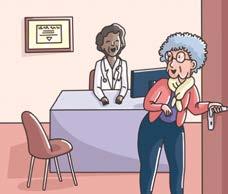
12 Write the question or the answer.
1. ◆ ? ◆ Mi chiamo Giuseppe.
2. ◆ Di dove sei?
3. ◆ Come ti chiami?
4. ◆ ? ◆ Sono giapponese, e tu?
13 Famous people. Complete. If you don’t know the person, use the internet.
E.g. Harry Styles è inglese
1. Taylor Swift è
2. Xi Jinping è
3. Lionel Messi è
4. Maria Sharapova è
5. Marco Mengoni è
6. Marion Cotillard è
7. Sebastian Vettel è 1 2 3 4




14 Complete.
buongiorno ciao tu Lei (x2) bene (x3) abbastanza bene (x4) stai sta
1. ◆ signora Russo, come sta? ◆ grazie, e ? ◆ .
2. ◆ Ciao Paolo! Come ? ◆ grazie, e , Monica?
3. ◆ Roberto, come stai?
, ho un esame e sono nervoso.
4. ◆ Buonasera signor Botti, come ?
grazie, e ?
15 Connect.
E.g. Sono italiana.
1. Di dove sei?
2. Buongiorno signora, come sta?
3. Marcel è spagnolo.
4. Karin è tedesca.
5. Mi chiamo Adrian.
6. Pietro è italiano, di Bologna.
7. Buonasera signor Fossa, come sta?


16 Put into the correct order.
1. Marco! / come / ciao / ? / stai
2. spagnola / mi chiamo / Ana, / sono
3. francese, / a Parigi / sono / abito
4. ? / sei / di dove
5. ? / abita / signor Grosso / dove
6. giapponese / mi chiamo / Shizuka, / sono
7. di Pechino / cinese, / sono
8. signor Lazzari! / come / ? / buonasera / sta
17 Complete with a or in.
E.g. La Torre Eiffel è a Parigi, in Francia.
1. La Sagrada Familia è Spagna.
2. Buckingham Palace è Londra.
3. La Torre di Pisa è Italia.
4. La Moschea Blu è Turchia, Istanbul.
5. Il Taj Mahal è Agra, India.
6. La Valle dei Templi è Italia, Agrigento.
7. Il Cristo Redentore è Rio de Janeiro, Brasile.
18 Form sentences using e.
sto bene leggi collega Emily tedesco ascolta inglese di Parigi completa
E.g. Mi chiamo Emily e sono inglese.
1. 2. 3. 4. 5. mi chiamo sono e Klaus tu grazie
19 Complete. come (x2) dove di dove (x2) che cosa (x2) quanti
E.g. ◆ Dove è Lisbona? ◆ È in Portogallo.
1. ◆ è? ◆ È un cellulare.
2. ◆ sei? ◆ Sono turco, di Istanbul.
3. ◆ si chiama? ◆ Mi chiamo Stefano Lava.
4. ◆ è Manipur? ◆ È in India.
5. ◆ ti chiami? ◆ Maria.
6. ◆ è Aiko? ◆ È giapponese, di Kyoto.
7. ◆ è? ◆ È un’agenda.
8. ◆ anni hai? ◆ Ho due anni.
20 Write the question.
1. ? Mi chiamo Raul.
2. ? Sono francese, di Parigi.
3. ? Abbastanza bene grazie, e tu?
4. ? Bene! E Lei signora Costa?
5. ? Stefania.
6. ?
Non bene, oggi è una brutta giornata.
7. ? Sono indiano.
8. ? A Mosca.
21 Find the odd one out.
E.g. bene | io | abbastanza bene | non bene
1. buongiorno | buonasera | ciao | sto
2. Berlino | Tokyo | francese | Londra
3. tu | Marco | io | lei
4. ascolta | dialogo | abbina | completa
5. Madrid | italiano | senegalese | cinese
6. Monica | Carlo | Roberto | Scotti
7. sono | è | sei | argentino
8. dove | cosa | come | bene
9. Roma | francese | Firenze | Palermo
10. americano | Italia | inglese | italiano Online self-checking exercises



22 Listen and connect the numbers.
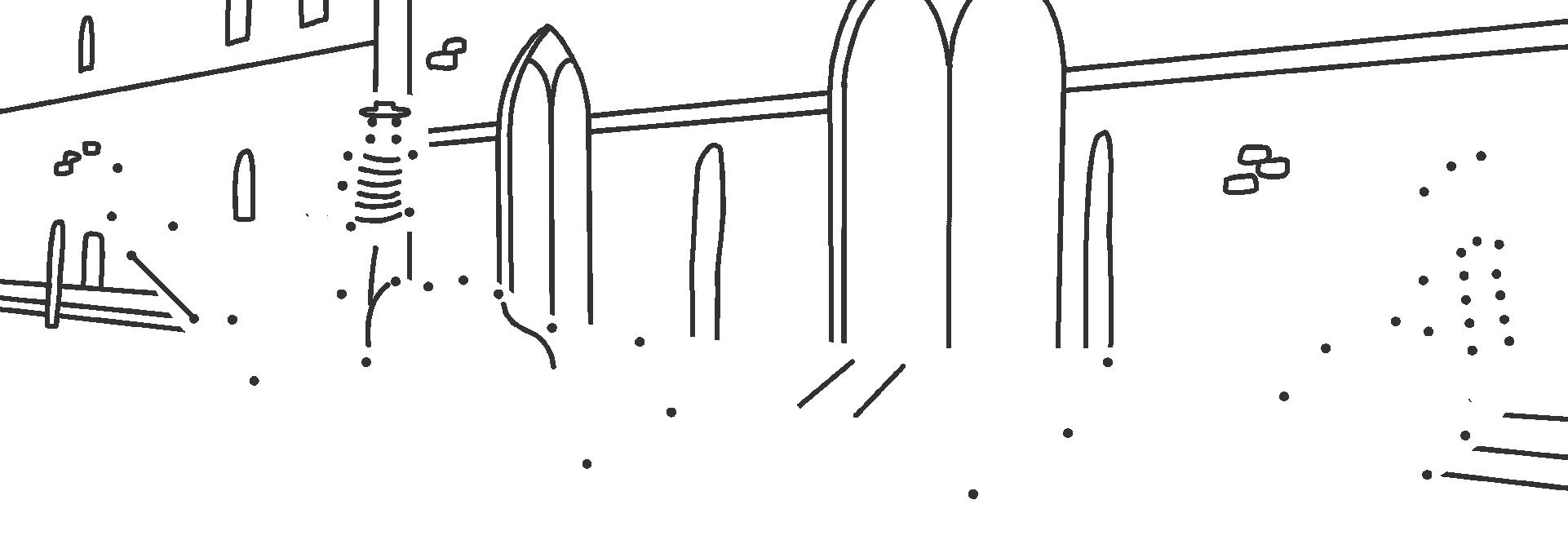
23 WHOLE CLASS Number chain. TEACHER’S GUIDE
24a Complete the sentences and find the words.
1. Ciao, mi chiamo Elena, sono , di Roma.
2. ◆ Di dove ? ◆ Sono marocchino, di Casablanca.
3. ◆ stai? ◆ Bene grazie, e tu?
4. Lui inglese, di Londra.
5. ◆ Come ? ◆ Mi chiamo Marco.
6. ◆ abiti? ◆ Abito a Milano.
7. ◆ anni hai? ◆ 22 anni.
24b Find the word: the remaining letters form the name of a famous artist from the 1500s.
25 IN GROUPS Race. Write all the words you remember. The winner is the group with most words. Video
